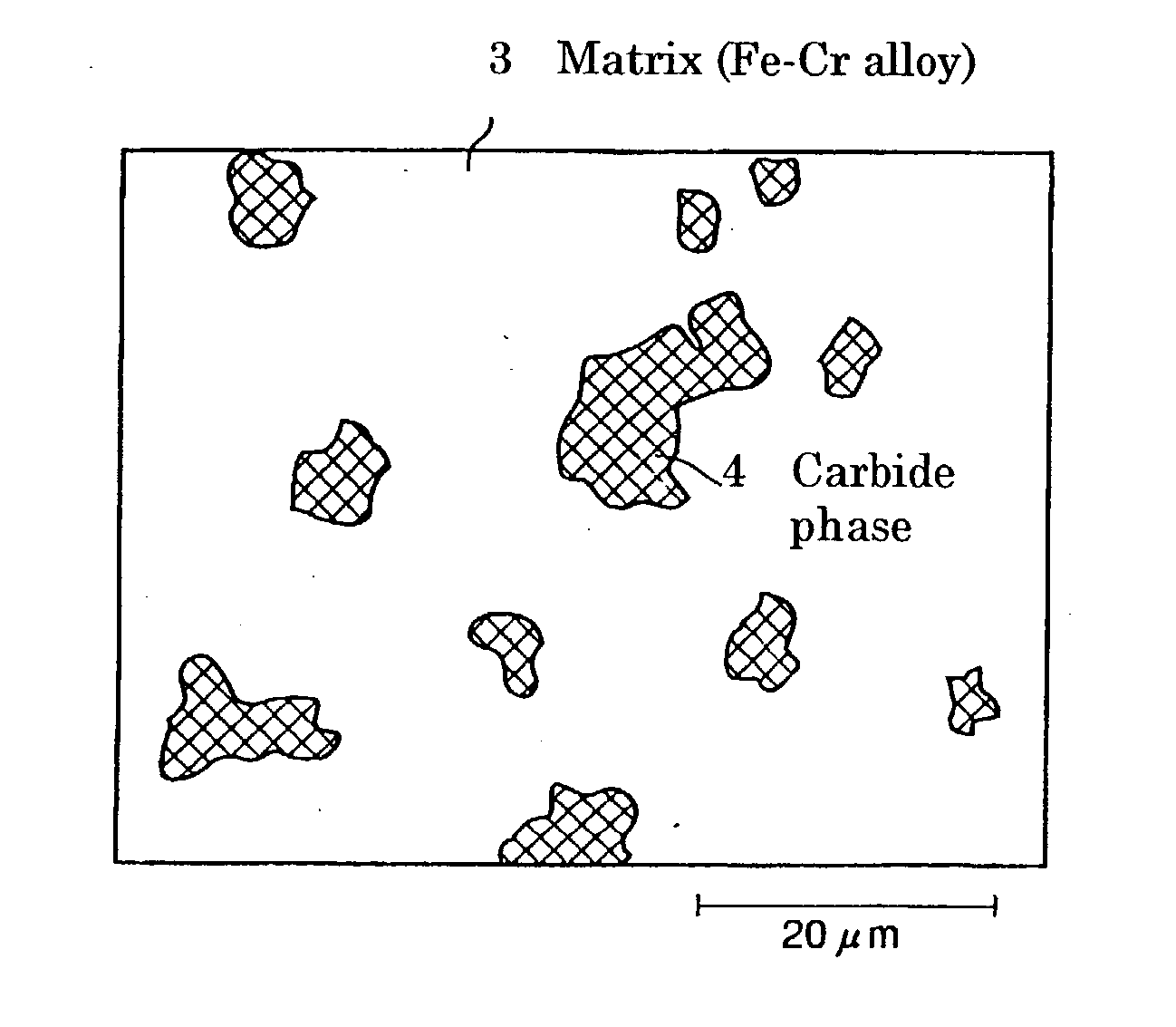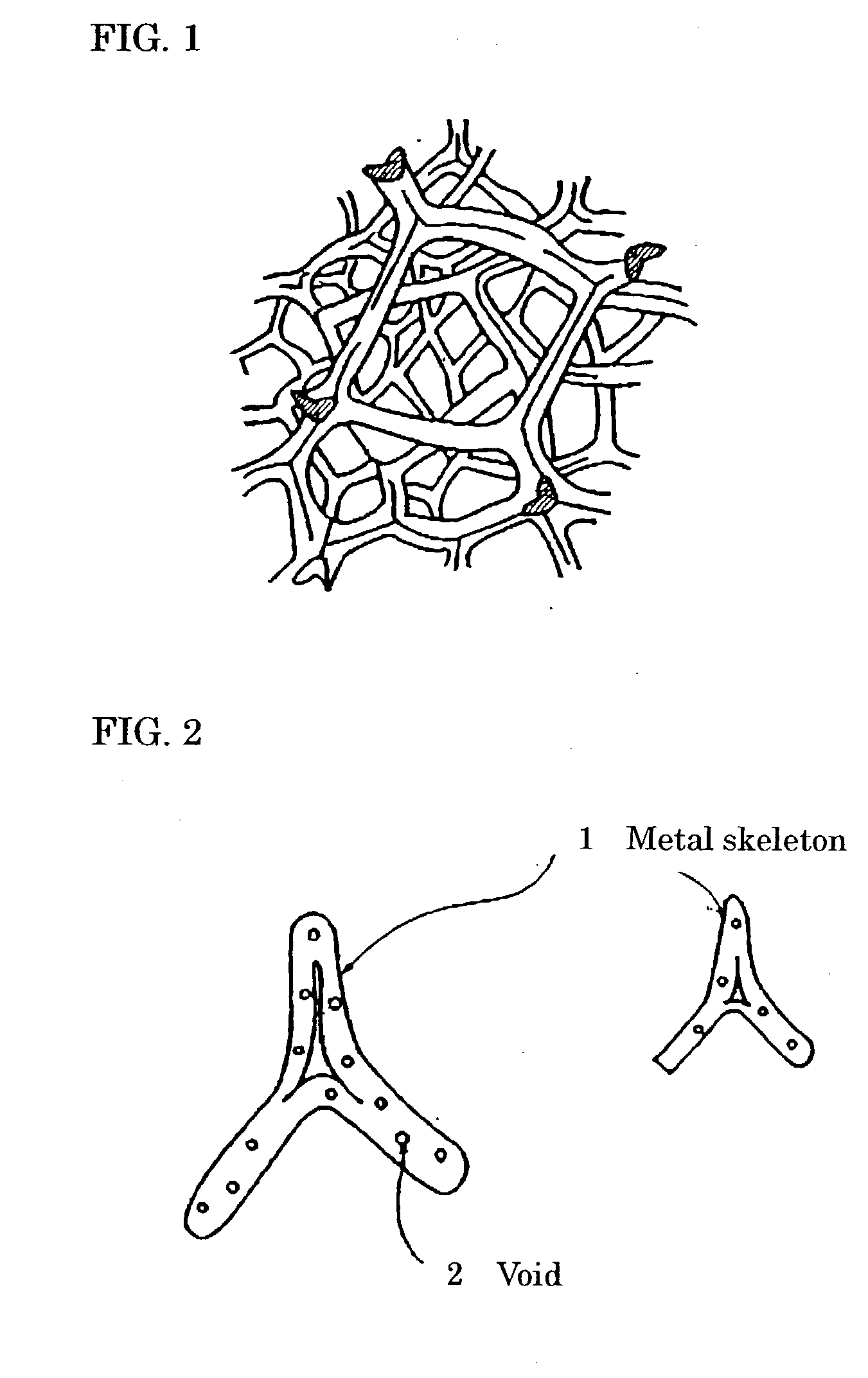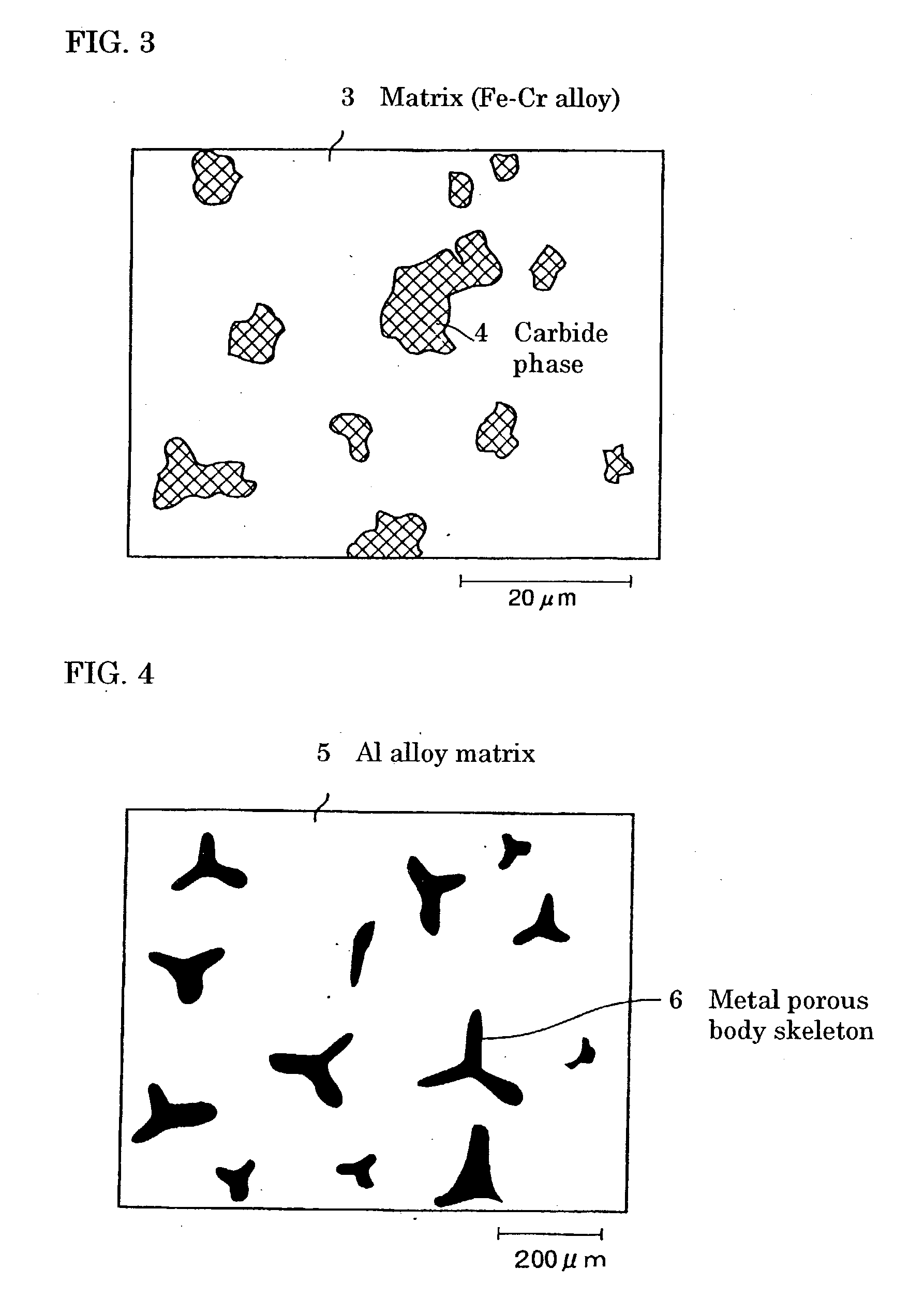Porous metal article, metal composite material using the article and method for production thereof
a metal composite material and porous metal technology, applied in the direction of solid-state diffusion coating, metallic material coating process, coating, etc., can solve the problems of reduced wear resistance, increased production costs, and increased difficulty in pre-operation work, and achieve unprecedented seizing resistance
- Summary
- Abstract
- Description
- Claims
- Application Information
AI Technical Summary
Benefits of technology
Problems solved by technology
Method used
Image
Examples
example 2
[0077] Slurries were prepared at a compounding ratio of 50% by mass of Fe.sub.2O.sub.3 powder having average particle diameters shown in Table III, 23% by mass of FeCr (Cr 60%) alloy powder having an average particle diameter of 8 .mu.m, 17% by mass of 65% phenol resin aqueous solution as a thermosetting resin, 2% by mass of CMC as a dispersing agent, and 8% by mass of water. The slurries were each applied by impregnation into polyurethane foams having a thickness of 10 mm and a pore diameter of 340 .mu.m. Excessive slurry was squeezed out by a metal roll and is removed. Subsequently, drying was performed in the atmosphere at 120.degree. C. for 10 minutes. After the polyurethane and the phenol resin were carbonized by the proess of heat-treating in N.sub.2 at 800.degree. C. for 20 minutes, reduction-sintering was performed in H.sub.2 at 1,200.degree. C. for 30 minutes so that porous metal bodies of FeCr alloy were produced. The resulting porous metal bodies were examined with respec...
example 3
[0080] Porous metal bodies were produced in a manufacture conditions similar to those in Example 2 except that an Fe.sub.2O.sub.3 powder having an average particle diameter of 0.7 .mu.m was used and the amount of the phenol resin, which was a thermosetting resin in the slurry, was changed such that the rate of carbon residue was changed. The conditions represented by the rate of carbon residue X of the resin components and the mass ratio Y of the resin components to oxygen contained in the oxides are as shown in Table V. The resin components were a phenol resin, urethane foam, and CMC.
5 TABLE V No. X* (% by mass) Y* X .times. Y* 15 52 0.40 20.8 16 52 0.70 36.4 17 52 1.03 53.7 18 52 1.50 77.9 19 52 1.86 97.0 20 52 2.23 116.0 21 52 2.43 126.4 22 52 2.53 131.6 *For determination of X and Y by calculation, the measurement of the resin components was performed after the urethane foam had been coated with the slurry and drying had been performed.
[0081] The porous metal bodies formed under...
example 4
[0083] Slurries were prepared with the following compositions: 50% by mass of Fe.sub.3O.sub.4 powder having an average particle diameter of 0.8 .mu.m, 7.9% by mass of Cr powder having an average particle diameter of 5 .mu.m, a third metal powder whose sort and amount are shown in Table VII, 12% by mass of 65% phenol resin aqueous solution, 2% by mass of dispersing agent (CMC), and water added thereto so as to total 100% by mass. The slurries were each applied by impregnation into polyurethane foams having a thickness of 15 mm and a pore diameter of 500 .mu.m, and excessive slurry was squeezed out by a metal roll and removed. Subsequently, drying was performed in the atmosphere at 120.degree. C. for 10 minutes. By heating in N.sub.2 atmosphere at 700.degree. C. for 25 minutes, carbonization of the resin was performed and FeCr composite oxides were formed, then reduction-sintering was performed by heating in a vacuum with a partial pressure of oxygen of 0.5 Torr at 1,180.degree. C. fo...
PUM
| Property | Measurement | Unit |
|---|---|---|
| pore diameter | aaaaa | aaaaa |
| pore diameter | aaaaa | aaaaa |
| temperature | aaaaa | aaaaa |
Abstract
Description
Claims
Application Information
 Login to View More
Login to View More - R&D
- Intellectual Property
- Life Sciences
- Materials
- Tech Scout
- Unparalleled Data Quality
- Higher Quality Content
- 60% Fewer Hallucinations
Browse by: Latest US Patents, China's latest patents, Technical Efficacy Thesaurus, Application Domain, Technology Topic, Popular Technical Reports.
© 2025 PatSnap. All rights reserved.Legal|Privacy policy|Modern Slavery Act Transparency Statement|Sitemap|About US| Contact US: help@patsnap.com



